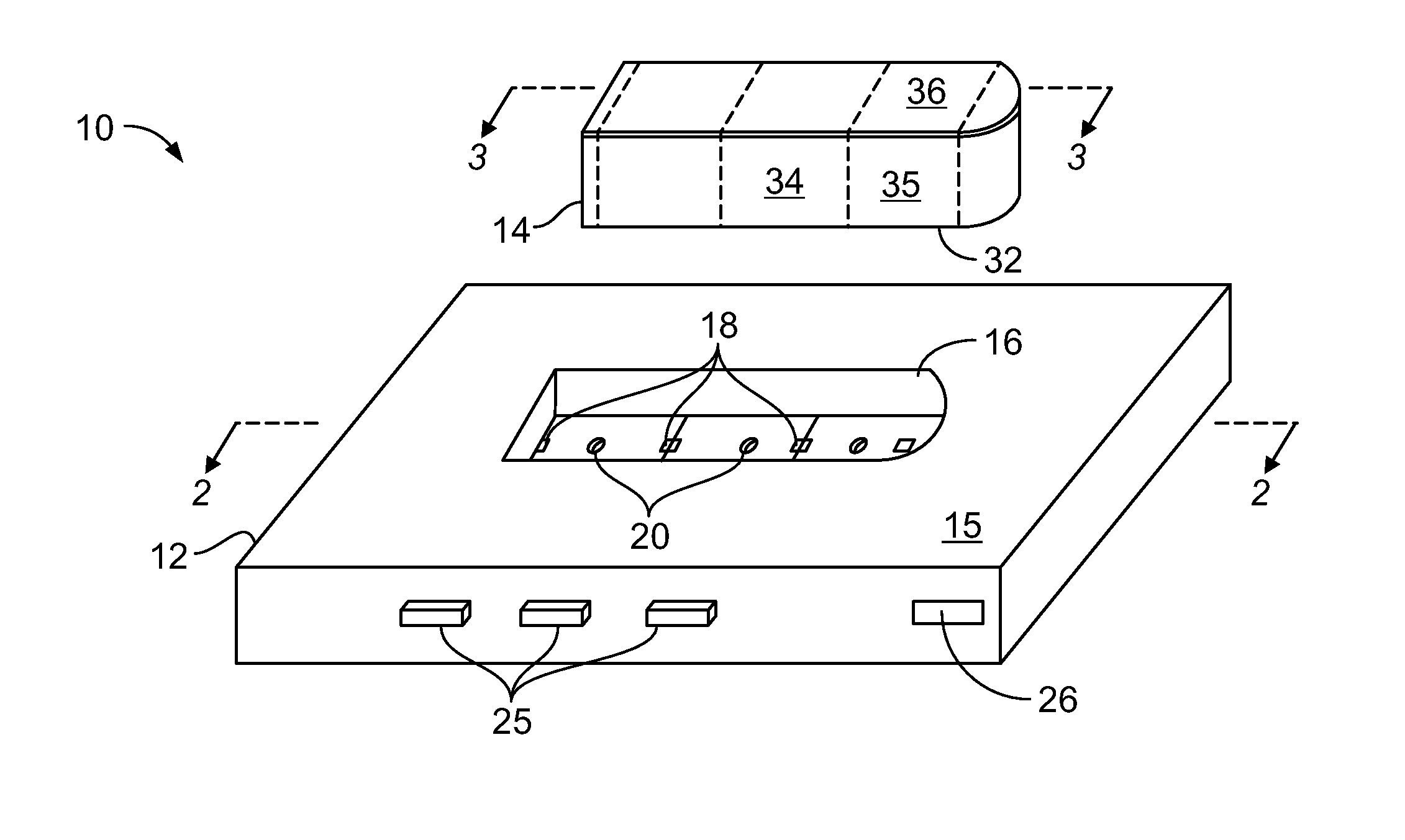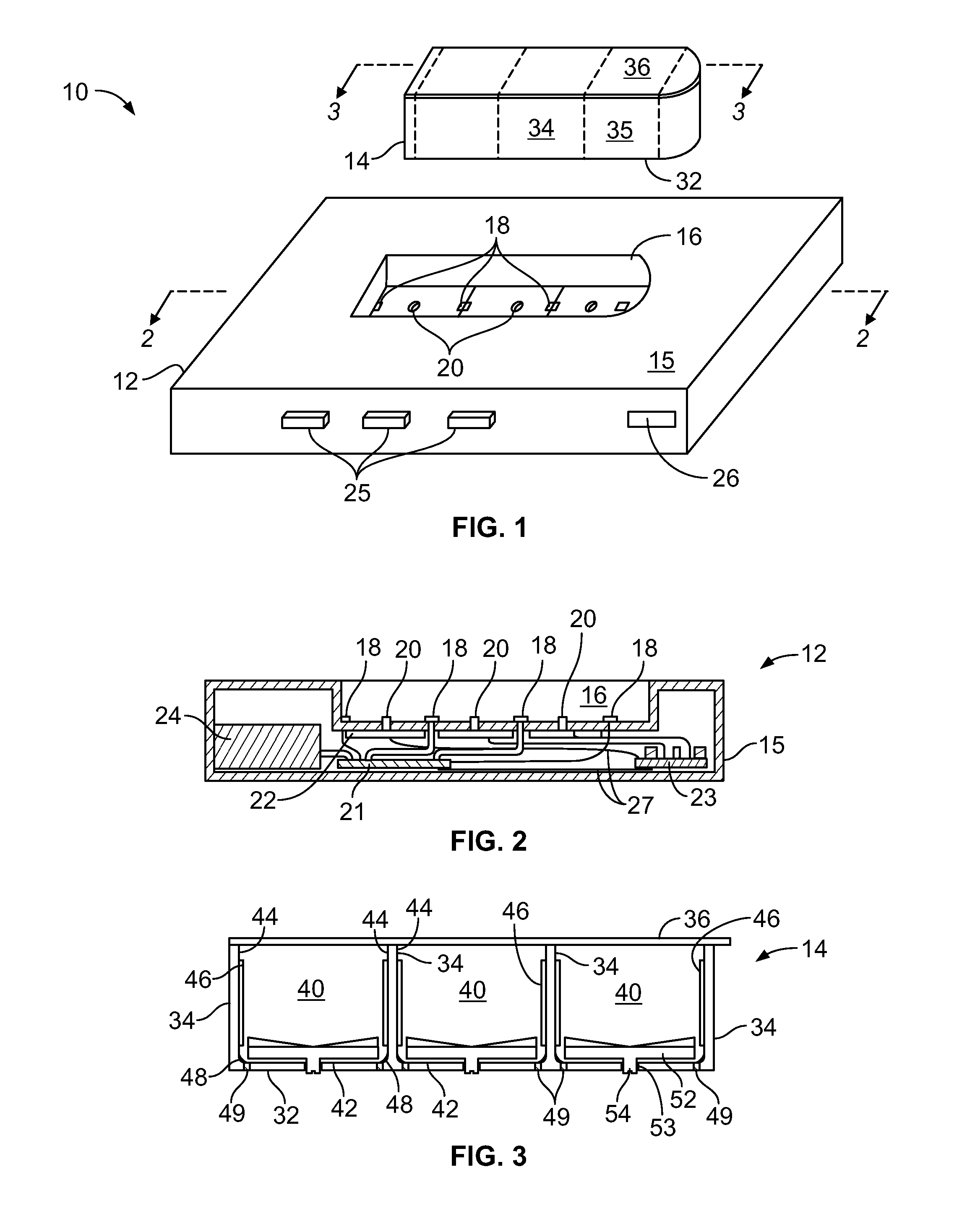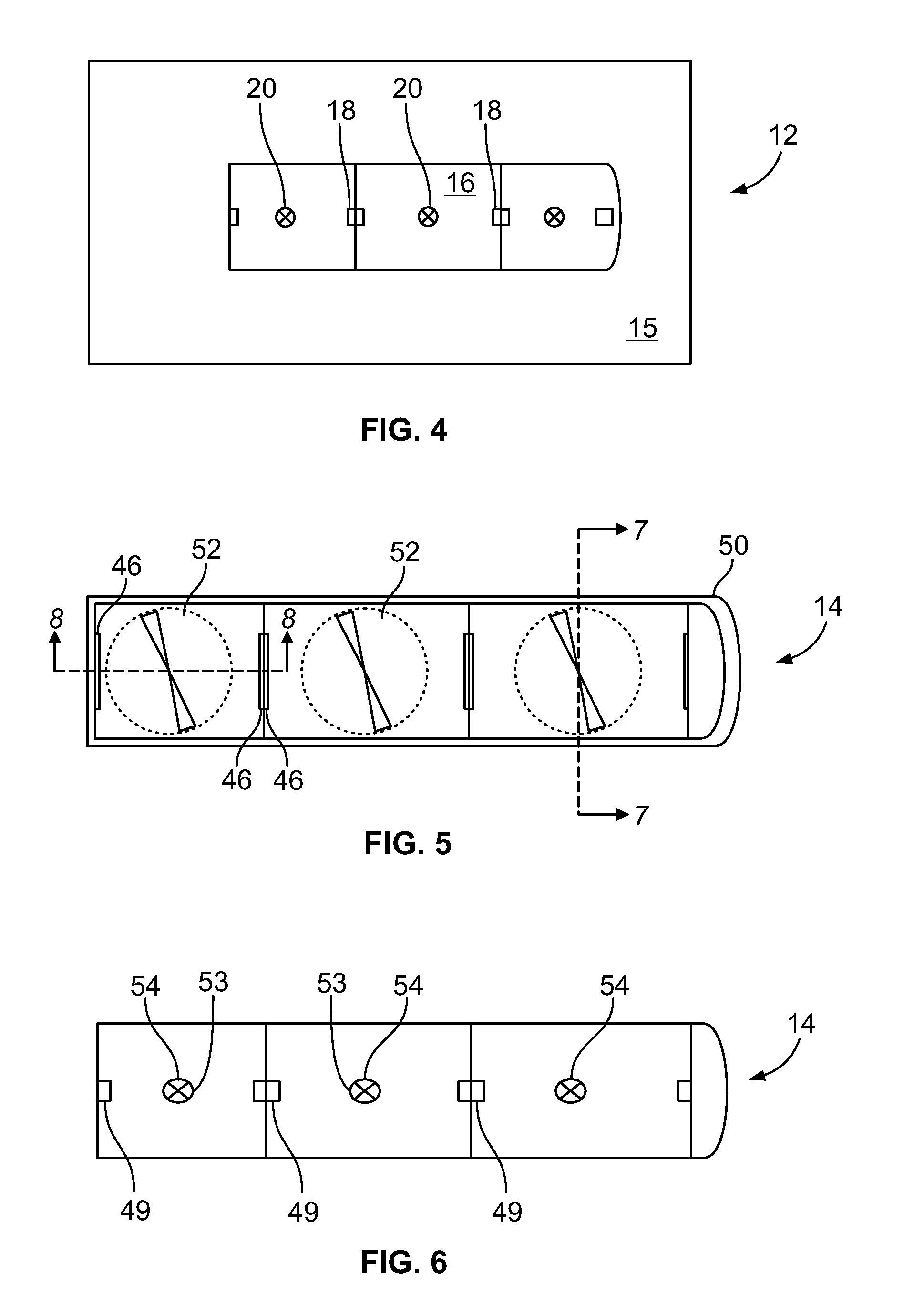Antigen detection system and methods of use
a detection system and antigen technology, applied in the field of antigen detection systems, can solve the problems of increasing the number of hospital visits annually, affecting the detection efficiency of antigen detection, and threatening the life of individuals, and achieving the effect of reducing the testing tim
- Summary
- Abstract
- Description
- Claims
- Application Information
AI Technical Summary
Benefits of technology
Problems solved by technology
Method used
Image
Examples
example 1
[0059]One liter of chicken broth is brought to a boil. One ml of peanut oil is added to the boiling broth and the mixture is allowed to simmer covered for 30 minutes. A test cartridge as described above, is provided, with Anti-AraH1 (peanut), rabbit-sourced polyclonal antibody [Indoor Biotechnology, Inc., Charlottesville, Va.) are immobilized in an agarose gel and applied to a piezoelectric film adhered to wall surfaces of a test well. 5 ml of the soup and peanut oil mixture is introduced into the test well and the test cartridge is inserted into the cartridge dock of the above-described base station. Upon engaging the test cartridge into the cartridge dock, 5 mA of DC current is applied to the piezoelectric film to establish a resonance frequency and, concurrently, 9V DC is applied to rotate the homogenizing element within the test well. After 60 seconds, a visual indicator illuminated indicative of the presence of antigen bound antibodies on the piezoelectric sensor.
example 2
[0060]The conditions of Example 1 are repeated, except that 25 grams of stewed carrots, 300 grams of dry wheat noodles, 5 mg salt, 5 mg pepper and 0.1 ml of peanut oil were added to 2 liters of chicken broth before bringing it to a boil. After simmering for 30 minutes 5 ml of the soup was introduced into the test well and the test cartridge inserted into the cartridge dock for 60 seconds. After 60 seconds, no illumination of the visual indicator was noted indicating a sub-threshold level of antigen binding to the antibodies.
example 3
[0061]An additional 1.9 ml of peanut oil were added to the soup mixture prepared in Example 2, the soup was again brought to a boil and simmered for 30 minutes. 5 ml of the soup was introduced into the same test well used in Example 2 and the test cartridge reinserted into the cartridge dock for 60 seconds. After 60 seconds the visual indicator illuminated indicating the presence of threshold binding of the antigen to the antibodies on the piezoelectric sensor.
PUM
 Login to View More
Login to View More Abstract
Description
Claims
Application Information
 Login to View More
Login to View More - R&D
- Intellectual Property
- Life Sciences
- Materials
- Tech Scout
- Unparalleled Data Quality
- Higher Quality Content
- 60% Fewer Hallucinations
Browse by: Latest US Patents, China's latest patents, Technical Efficacy Thesaurus, Application Domain, Technology Topic, Popular Technical Reports.
© 2025 PatSnap. All rights reserved.Legal|Privacy policy|Modern Slavery Act Transparency Statement|Sitemap|About US| Contact US: help@patsnap.com



